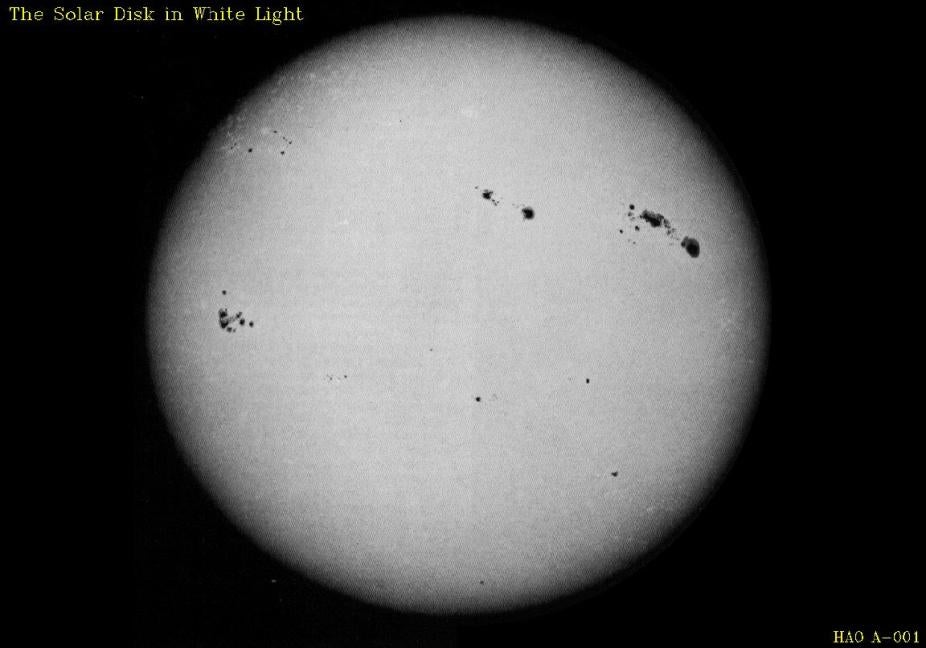The Solar Disk in White Light
This is the Sun, probably very much as seen through the first telescopes by Galileo and other early solar astronomers in the years 1610–1611.

The Solar Disk in White Light.
At first glance the solar disk is featureless, except for sunspots, visible on this image in the form of dark blemishes. Closer scrutiny reveals the presence of bright, filamentary structures, most easily seen near the limb, called plages. By tracing the apparent path of sunspots across the solar disk from one day to the next, solar astronomers of the early seventeenth century could demonstrate that sunspots were true features belonging to the solar surface, as opposed to shadows of small planets moving across the solar disk, and thus demonstrated that like the Earth, the Sun rotates.They could also estimate the rotation period of the Sun (i.e., the length of the "solar day", about 27 days as seen from the Earth). The largest sunspots and/or sunspot groups are visible to the naked-eye under favorable viewing conditions, such as when the Sun is viewed through clouds or thick mist. Various historical records predating the invention of the telescope do indeed contain reports of sunspot sightings.
Also see AstronomyConnect.
Written By P. Charbonneau and O.R. White–April 18, 1995